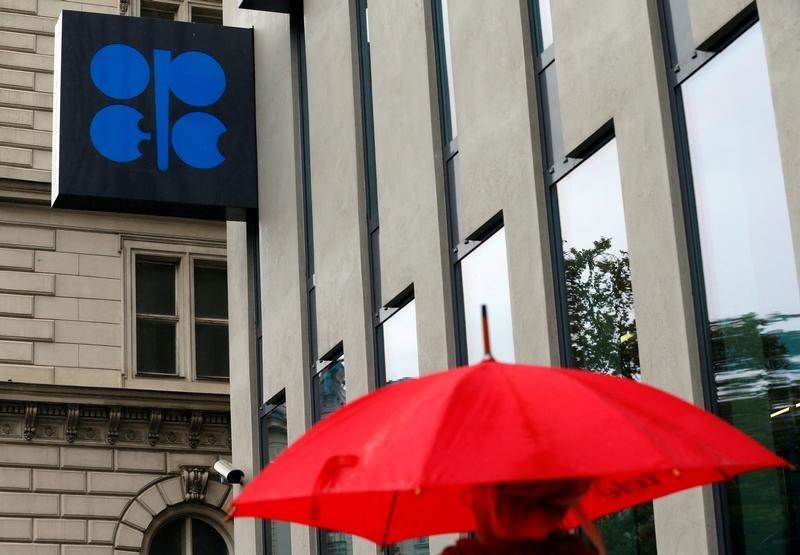(Bloomberg) -- OPEC’s Persian Gulf exporters shipped more oil last month than at any time since May, when their current round of output restraint came into effect. The move came before a slight easing of output curbs in January and talks to decide whether to change production targets in February.
Combined shipments of crude and condensate -- a light form of oil extracted from gas fields -- from Saudi Arabia, Iraq, the United Arab Emirates and Kuwait were more than 700,000 barrels a day higher in December than in November. Increased shipments from Saudi Arabia, Kuwait and Iraq more than offset a drop in flows from the UAE, vessel tracking data monitored by Bloomberg show.
The four Persian Gulf nations shipped a total of 14.01 million barrels a day of crude and condensate last month. With 11 million barrels, equivalent to about 360,000 barrels a day, on ships yet to signal a final destination, the volumes delivered to individual countries could rise significantly.
The biggest increase came from Saudi Arabia, where shipments rose to their highest level since April, when the kingdom engaged in a production surge in response to the breakdown of the previous OPEC+ accord.
Iraq and Kuwait also both increased exports month on month in December, but neither exceeded the volumes they shipped in October, the data show.
In contrast, flows from the UAE fell to their lowest in data going back to January 2017, when the first OPEC+ output deal came into effect.
Observed flows from Iran have been excluded, as most of the country’s tanker fleet remains hidden from tracking.
Shipments from those four Gulf nations to China, based on preliminary destination signals from tankers, rose by 24% to their highest level since May, when the Asian nation boosted purchases to fill stockpiles after oil prices had collapsed to their lowest in 18 years. Saudi Arabia and Iraq both increased flows to their highest levels since that time.
Crude and condensate flows to Japan slipped back after surging in November, but remained at their second-highest level since March. An increase in shipments from Saudi Arabia of 186,000 barrels a day was more than offset by a big drop in flows from the UAE.
Flows to South Korea were little changed in December, edging higher for a second month, but remaining within 40,000 barrels a day, or 2.8%, of the lowest levels in at least four years. A slump in shipments from Iraq, which slid 51%, was more than offset by increases from Kuwait and the UAE.
Aggregate Persian Gulf crude flows to India edged higher in December, but remained in the range of 2.2 million to 2.4 million barrels a day seen since August. That compares with a range of almost 2.6 million to nearly 3 million barrels a day in the six months before the pandemic slashed demand.
Flows to the U.S. were little changed from November, with Saudi Arabia and Iraq both sending slightly smaller volumes across the Atlantic in December. Although recovered from their October low, shipments remain well down on prior years, amid the continuing demand slump and post-hurricane-season uptick in U.S. production.
Note: The figures above include exports from northern Iraq via Ceyhan in Turkey and outflows from the UAE’s Indian Ocean coast and from Saudi Arabian Red Sea ports. They include crude and condensates, a light form of oil extracted from gas fields. Figures for flows to individual destinations are subject to change, especially when ships pass transit points like Singapore and the Suez Canal.
- Bloomberg Terminal users can click on NI TANTRA for all tanker tracking stories, ALLX CUAG for tickerized data for Persian Gulf OPEC flows, and LINE GBLCRUDE for an overview of Bloomberg tanker tracking.
©2021 Bloomberg L.P.
